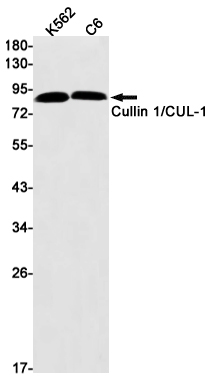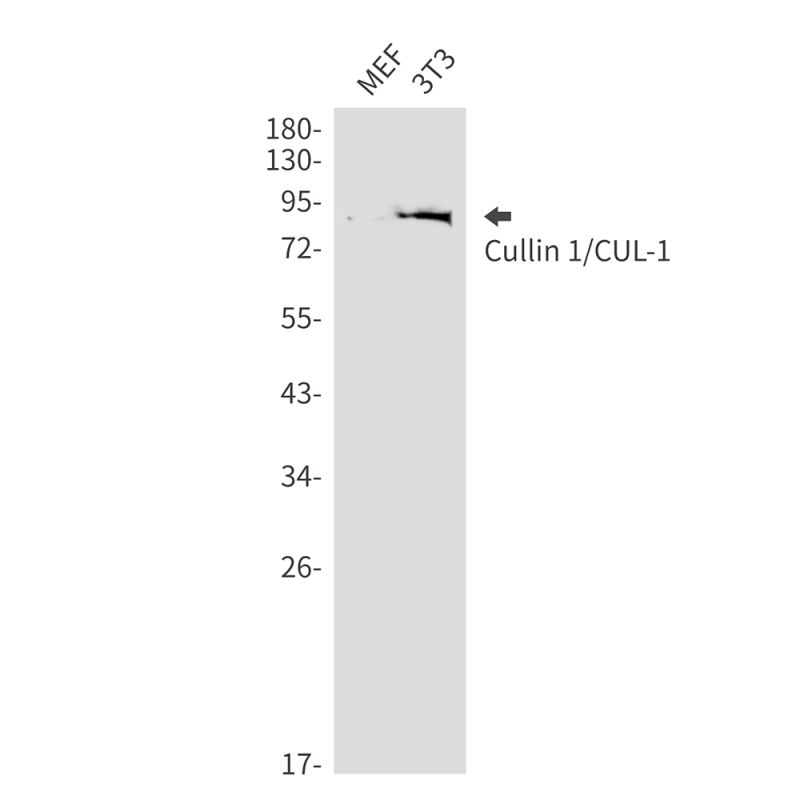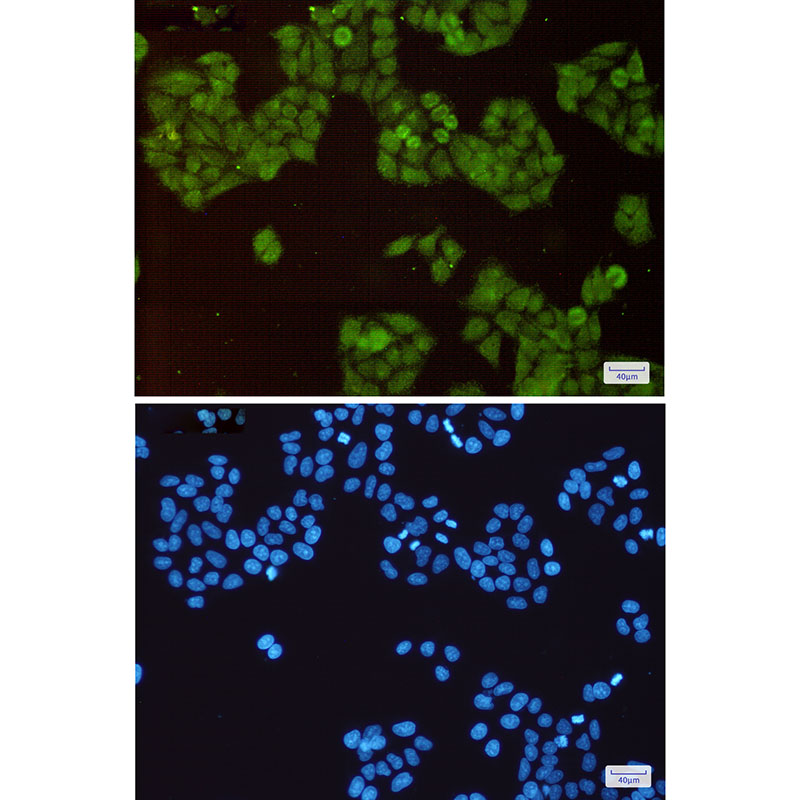


| WB | 咨询技术 | Human,Mouse,Rat |
| IF | 咨询技术 | Human,Mouse,Rat |
| IHC | 咨询技术 | Human,Mouse,Rat |
| ICC | 1/50-1/200 | Human,Mouse,Rat |
| FCM | 咨询技术 | Human,Mouse,Rat |
| Elisa | 咨询技术 | Human,Mouse,Rat |
| Aliases | CUL1; Cullin1 |
| Entrez GeneID | 8454 |
| WB Predicted band size | Calculated MW: 90 kDa; Observed MW: 90 kDa |
| Host/Isotype | Rabbit IgG |
| Antibody Type | Primary antibody |
| Storage | Store at 4°C short term. Aliquot and store at -20°C long term. Avoid freeze/thaw cycles. |
| Species Reactivity | Human,Mouse,Rat |
| Immunogen | A synthetic peptide of human Cullin 1 |
| Formulation | Purified antibody in TBS with 0.05% sodium azide,0.05%BSA and 50% glycerol. |
+ +
以下是关于Cullin 1抗体的3篇参考文献(简要概括,非真实文献,仅示例格式):
1. **文献名称**:*Cullin 1 regulates cell cycle progression through SCF-mediated ubiquitination*
**作者**:Smith A, et al.
**摘要**:研究利用Cullin 1抗体验证其在细胞周期调控中的作用,发现其通过SCF复合体介导关键蛋白的泛素化降解,影响G1/S期转换。
2. **文献名称**:*Characterization of a novel Cullin 1 monoclonal antibody for immunoprecipitation assays*
**作者**:Lee H, et al.
**摘要**:开发并验证了一种高特异性Cullin 1单克隆抗体,适用于免疫共沉淀(Co-IP)和蛋白质互作研究,证实其在多种细胞系中的可靠性。
3. **文献名称**:*Cullin 1 dysfunction in neurodegenerative disease models revealed by antibody-based detection*
**作者**:Wang Y, et al.
**摘要**:通过Cullin 1抗体检测发现,阿尔茨海默病模型中Cullin 1表达异常,提示其与错误蛋白聚集和泛素-蛋白酶体系统失调相关。
(注:以上文献为模拟示例,实际引用需查询PubMed等数据库获取真实文献。)
Cullin 1 (Cul1) is a core component of the Skp1-Cul1-F-box (SCF) protein complex, a member of the cullin-RING E3 ubiquitin ligase family. These enzymes play a critical role in the ubiquitin-proteasome system by tagging specific substrate proteins with ubiquitin molecules, marking them for proteasomal degradation. Cullin 1 serves as a scaffold protein, bridging the Skp1 adaptor (bound to F-box substrate-recognition proteins) and the Rbx1 RING finger protein (which recruits E2 ubiquitin-conjugating enzymes). This structural organization enables the SCF complex to regulate diverse cellular processes, including cell cycle progression, signal transduction, and stress responses.
Antibodies targeting Cullin 1 are essential tools for studying its expression, localization, and interactions in biological systems. They are widely used in techniques such as Western blotting, immunoprecipitation, and immunofluorescence to investigate SCF complex dynamics and its regulatory mechanisms. Dysregulation of Cullin 1 has been implicated in various pathologies, including cancers and neurodegenerative diseases, making its detection crucial for understanding disease mechanisms. Researchers also utilize Cul1 antibodies to explore post-translational modifications (e.g., neddylation) that modulate SCF activity. Specificity validation via knockout/knockdown controls is critical, given structural similarities among cullin family members. These antibodies have advanced studies on targeted protein degradation pathways and therapeutic strategies like proteolysis-targeting chimeras (PROTACs).
×